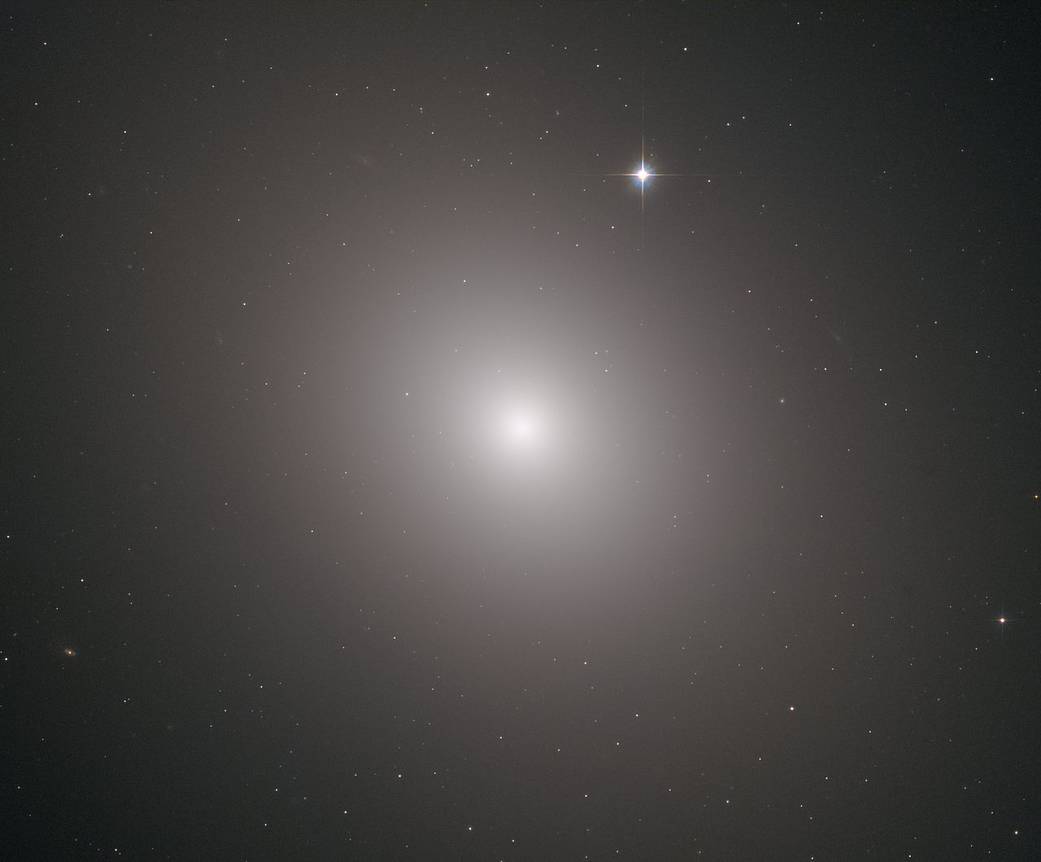Hubble Captures the Brilliant Heart of a Massive Galaxy
这个模糊的光球是一个巨大的椭圆星系,充满了难以置信的2000亿颗恒星。与螺旋星系不同的是,椭圆星系有着清晰的结构和独特的旋臂,看起来相当光滑,没有任何特征。这可能就是为什么这个名为梅西耶49 (M49)的星系在1771年被法国天文学家查尔斯梅西耶发现。M49距离5600万光年,直径15.7万光年,是室女座星系团中被发现的第一个星系,它的亮度比任何与其距离或更近的星系都要高。
椭圆星系比螺旋星系含有更多的老恒星,也缺少年轻的蓝色恒星。M49本身是非常黄色的,这表明它里面的恒星大多比太阳更古老、更红。事实上,星系中恒星形成的最后一次大事件发生在大约60亿年前——甚至在太阳诞生之前!
M49还富含球状星团;它拥有大约6000颗恒星,这一数字使银河系内外发现的150颗恒星相形见绌。这些星团平均有100亿年的历史。M49的中心还存在一个超大质量黑洞,其质量超过5亿个太阳,可以通过从星系中心涌出的X射线来识别。(由于这张哈勃图像由光学和红外观测组成,这些x射线在这里是看不见的。)
M49号出现在哈勃的梅西耶目录中,其中包括一些可以从地球北半球观测到的最迷人的物体。查看NASA处理的图像和其他梅西耶对象:https://www.nasa.gov/content/goddard/hubbs-messier。
图片来源:ESA/Hubble & NASA, J. Blakenslee, P. Cote等。
资料来源:欧洲航天局
This fuzzy orb of light is a giant elliptical galaxy filled with an incredible 200 billion stars. Unlike spiral galaxies, which have a well-defined structure and boast picturesque spiral arms, elliptical galaxies appear fairly smooth and featureless. This is likely why this galaxy, named Messier 49 (M49), was discovered by French astronomer Charles Messier in 1771. At a distance of 56 million light-years and measuring 157,000 light-years across, M49 was the first member of the Virgo Cluster of galaxies to be discovered, and it is more luminous than any other galaxy at its distance or nearer.
Elliptical galaxies tend to contain a larger portion of older stars than spiral galaxies and also lack young, blue stars. Messier 49 itself is very yellow, which indicates that the stars within it are mostly older and redder than the Sun. In fact, the last major episode of star formation within the galaxy was about six billion years ago — before the Sun was even born!
Messier 49 is also rich in globular star clusters; it hosts about 6,000 — a number that dwarfs the 150 found in and around the Milky Way. On average, these clusters are 10 billion years old. Messier 49 is also known to host a supermassive black hole at its center with the mass of more than 500 million Suns, identifiable by the X-rays pouring out from the heart of the galaxy. (As this Hubble image comprises optical and infrared observations, these X-rays are not visible here.)
Messier 49 is featured in Hubble’s Messier catalog, which includes some of the most fascinating objects that can be observed from Earth’s Northern Hemisphere. See the NASA-processed image and other Messier objects at: https://www.nasa.gov/content/goddard/hubble-s-messier-catalog.
Image Credit: ESA/Hubble & NASA, J. Blakenslee, P. Cote et al.
Text Credit: European Space Agency (ESA)

